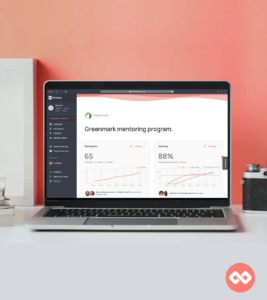Employee resource groups (ERGs) have become increasingly popular in organizations that are focused on enhancing diversity, inclusivity, and employee engagement. By implementing best practices, businesses can create successful and high-impact ERGs to better their workplace environment. In this article, we will explore the basics of ERGs and provide helpful strategies to establish, maintain, and measure their effectiveness.
Understanding Employee Resource Groups (ERGs)
Employee Resource Groups have emerged as a valuable tool for organizations as they aim to build a more inclusive workplace culture. These groups are formed of employees who share common characteristics, interests, or experiences, and they often focus on underrepresented or marginalized populations in the workplace. Let’s delve into the definition, types, and benefits of ERGs.
Definition and Purpose of ERGs
What is an Employee Resource Group (ERG)?
ERGs, also known as affinity groups or employee networks, are voluntary, employee-led groups that serve as a supportive space for employees with shared characteristics or life experiences. ERGs not only foster a sense of belonging and engagement among group members but also contribute to the organization’s diversity and inclusion efforts.
Learn more about what an ERG is, the purpose and how to set one up.
The primary purpose of ERGs is to offer support, mentoring, and networking opportunities to their members while promoting the understanding and appreciation of various cultures and experiences throughout the organization. They can also serve as a valuable source of feedback for organizational leaders as they work to create more inclusive policies and practices.
ERGs can also serve as a platform for employees to develop leadership skills, gain exposure to different parts of the organization, and build relationships with colleagues they may not have otherwise interacted with. In this way, ERGs can contribute to a more collaborative and cohesive workplace culture.
Types of Employee Resource Groups
ERGs can be centered around various aspects of shared identity or affinity, such as race, gender, sexual orientation, or age. Common ERGs types include:
- Racial or ethnic groups, such as those focused on African American, Indigenous Australians, BAME, or Latinx communities, depending on where you are in the world.
- Gender-based groups, including those supporting women, men, or gender-nonconforming individuals.
- LGBTQ+ groups, encompassing employees who identify as lesbian, gay, bisexual, transgender, or queer/questioning.
- Groups for people with disabilities, both visible and invisible.
- Groups focused on supporting veterans and active military personnel.
In addition to identity or affinity-based groups, ERGs can also focus on shared experiences or interests, such as work-life balance, environmental sustainability, working parents and carers, or community service. These groups can offer employees an opportunity to connect with colleagues who share similar values and passions outside of work, further fostering a sense of community and engagement.
Benefits of ERGs for Employees and Organizations
ERGs offer numerous benefits for both their members and the organizations they exist within. For employees, ERGs can provide:
- Professional development and mentoring opportunities: ERGs often offer members access to training, workshops, and other resources to help them develop new skills and advance their careers.
- A sense of belonging and social connections: ERGs can provide a safe and supportive space for employees to connect with others who share their experiences and identities.
- A platform for sharing experiences and fostering understanding: ERGs can help to raise awareness and understanding of different cultures, experiences, and perspectives within the organization.
- A resource for advocating for a more responsive and inclusive workplace culture: ERGs can serve as a powerful voice for change within the organization, advocating for policies and practices that promote diversity, equity, and inclusion.
For organizations, ERGs can yield advantages such as:
- Increased employee engagement and retention: Employees who feel supported and valued are more likely to be engaged and committed to their work, and less likely to leave the organization.
- Enhanced overall innovation and creativity: ERGs can bring together employees with diverse perspectives and experiences, leading to more innovative and creative solutions to business challenges.
- A better understanding of diverse markets and customers: By promoting a more diverse and inclusive workplace culture, organizations can better understand and connect with diverse markets and customers.
- A stronger reputation for being an employer of choice: Organizations that prioritize diversity, equity, and inclusion are more likely to be seen as attractive employers by job seekers and current employees alike.
Overall, ERGs can be a powerful tool for organizations looking to build a more inclusive and supportive workplace culture, while also fostering employee engagement, development, and retention.

Establishing Effective ERGs
Employee Resource Groups (ERGs) are crucial for creating a diverse and inclusive workplace. They provide a sense of community and support for employees who share common backgrounds, experiences, or interests. ERGs can also drive positive change within an organization by promoting awareness, education, and advocacy for diversity and inclusivity initiatives.
Identifying the Need for an ERG
Before establishing an ERG, it’s essential to assess the workforce composition and the existing diversity and inclusivity programs. This will help identify gaps and areas that need improvement. It’s also crucial to engage in conversations with employees and gather their ideas and opinions. Recognizing the unique needs and perspectives of diverse employee populations will ensure the ERG addresses these specific concerns.
For example, if there is a lack of representation of women in leadership positions, a Women’s ERG can help provide support, mentorship, and advocacy for women in the workplace. Similarly, an ERG for employees with disabilities can help raise awareness and promote accessibility and accommodations within the organization.
Gaining Leadership Support and Sponsorship
Selecting the right leadership is vital to the success of an ERG. Effective leaders and sponsors from within the organization can provide valuable guidance, resources, and visibility to the group. It’s essential to engage senior leaders who are genuinely committed to supporting diversity and inclusivity initiatives, as their influence will pave the way for widespread organizational support.
Leadership support can also help secure funding and resources for the ERG. This can include budget for events, training, and other initiatives that promote diversity and inclusivity within the organization.
Creating a Clear Mission and Objectives
A well-defined mission and set of objectives will provide a strong sense of purpose and direction for the ERG. Collaboratively develop these with ERG members and consider how they align with the organization’s overall goals and values. This will lay the foundation for a focused and impactful group.
For example, the mission of a Black ERG can be to promote awareness and education on issues related to Black employees, advocate for their needs, and celebrate their contributions to the organization. Objectives can include organizing events such as Black History Month celebrations, providing mentorship and professional development opportunities, and partnering with other ERGs to promote intersectionality.
Developing a Strong Governance Structure
Successful ERGs require a solid governance structure to ensure smooth operations and continued growth. Establishing roles and responsibilities, creating bylaws, and outlining decision-making processes will facilitate effective communication, coordination, and accountability within the group.
It’s important to ensure that the ERG is inclusive and transparent in its decision-making processes. This can include soliciting feedback and input from all members, ensuring that leadership positions are rotated regularly, and providing opportunities for members to participate in committees or subgroups that align with their interests and skills.
Overall, establishing an effective ERG requires careful planning, commitment, and collaboration. By following these steps, organizations can create a supportive and inclusive workplace that values diversity and promotes equity for all employees.
Discover more about how you can support ERGs in your organization.
Strategies for ERG Success
Employee Resource Groups (ERGs) are an essential component of a diverse and inclusive workplace culture. ERGs provide a platform for employees to connect, collaborate, and share their experiences and perspectives. Once established, effective implementation and execution of various strategies will help maintain ERG success.
Encouraging Inclusivity and Diversity
To maximize impact, ERGs must promote an inclusive and diverse membership, welcoming individuals from various backgrounds and perspectives. Ensure that membership is open to all interested employees, and engage allies who have a genuine passion for contributing to a more inclusive workplace culture. Actively work to eliminate barriers to participation, such as providing flexible meeting times, remote access options, and language support.
One way to foster inclusivity is to celebrate cultural events and holidays. ERGs can organize events and activities that promote understanding and appreciation of different cultures. For example, during Black History Month, an ERG can organize a panel discussion on the contributions of African Americans to the organization or host a cultural food festival. Such events can help build bridges between different groups and promote a sense of belonging.
Fostering Collaboration and Networking
Collaboration and networking are essential components for the growth and success of ERGs. Encourage regular communication among members, as well as opportunities to network with senior leaders, other ERGs, and external organizations. Cross-functional collaboration can lead to innovative ideas and solutions that may not have been discovered within the group alone.
One way to foster collaboration is to organize joint events with other ERGs or departments. For example, an ERG focused on women’s empowerment can collaborate with the marketing department to organize a panel discussion on women’s leadership in the industry. Such events can help break down silos and foster a culture of collaboration.
Dive deeper into how mentoring programs can be implemented by a ERGs.
Providing Professional Development Opportunities
Offering professional development opportunities for ERG members can enhance personal growth and career advancement. These opportunities may include mentorship programs, workshops, seminars, or webinars on relevant topics. Also, encourage members to take on leadership roles within the ERG to develop valuable professional skills.
One way to provide professional development opportunities is to organize skill-building workshops. For example, an ERG focused on LGBTQ+ issues can organize a workshop on how to be an effective ally in the workplace. Such workshops can help members develop valuable skills that they can apply in their personal and professional lives.
Aligning ERG Goals with Organizational Objectives
Ensuring that the ERG’s goals and initiatives are aligned with the organization’s overall objectives can help strengthen the group’s impact and relevance. Actively engaging with executive sponsors and working with other ERGs and departments will facilitate the integration of ERG initiatives into broader organizational strategies. Emphasize the value that a diverse and inclusive workplace brings in terms of employee engagement, innovation, and stronger customer relationships.
One way to align ERG goals with organizational objectives is to identify areas where ERG initiatives can contribute to the organization’s bottom line. For example, an ERG focused on disability inclusion can work with the HR department to develop policies and practices that ensure that the organization is compliant with disability laws and regulations. Such initiatives can help the organization attract and retain top talent and enhance its reputation as a socially responsible employer.
In conclusion, ERGs play a critical role in promoting diversity and inclusion in the workplace. By fostering inclusivity and diversity, encouraging collaboration and networking, providing professional development opportunities, and aligning ERG goals with organizational objectives, ERGs can make a significant impact on the organization’s culture and bottom line.
Measuring ERG Impact and Performance
In today’s diverse and inclusive workplace, Employee Resource Groups (ERGs) have become an essential tool for companies to foster connections, promote engagement, and drive positive change. ERGs are voluntary, employee-led groups that provide a platform for employees to connect, share experiences, and advocate for diverse perspectives. However, to ensure the continued effectiveness of ERGs, it’s essential to measure and evaluate their impact and performance.
ERGs can have a significant impact on an organization’s culture, employee engagement, and business outcomes. According to a study by Deloitte, companies with highly inclusive cultures are six times more likely to be innovative and agile, eight times more likely to achieve better business outcomes, and twice as likely to meet or exceed financial targets.
Setting Key Performance Indicators (KPIs)
Defining clear and measurable KPIs for ERG activities can provide valuable insights into their impact and effectiveness. These indicators may include membership growth, employee engagement and satisfaction, diversity and inclusion metrics, or the realization of specific project objectives. By setting KPIs, ERG leaders can track progress and identify areas for improvement.
For example, if an ERG’s goal is to increase membership by 20% within six months, they can track the number of new members and assess their engagement and satisfaction levels. Similarly, if an ERG is working on a project to promote diversity and inclusion in the workplace, they can measure the project’s success by the number of employees who participated in the initiative and the impact it had on the organization’s culture.
Regularly review these KPIs to ensure your ERG remains on track and focused on delivering meaningful results. If an ERG is not meeting its KPIs, it’s essential to identify the root cause and adjust the strategy accordingly.
Many customers of Mentorloop set KPIs that relate to mentoring engagement and participation.
It’s remarkable how many potential connections are likely sitting under your nose in your organization.
For example:
👉 In a group of 4 people, you can have up to 6 unique relationships.
👉 In a group of 1000, that swells to 499,500.
The impact that this number of connections can have on an organization is unfathomable. By creating opportuntiy for your people to connect, share their experiences and lift one another, a mentoring culture can very much change the fabric of our working environments for the better.
Regularly Evaluating and Adjusting ERG Strategies
Continually evaluating and adjusting ERG strategies is necessary to maintain relevance and drive improvement. ERG leaders should engage in regular review processes, such as annual retreats or strategy sessions, to explore the group’s progress, identify areas for growth, and address any obstacles or challenges.
Gathering feedback from members and stakeholders can provide invaluable insights and inform future initiatives. ERG leaders should encourage open and honest communication and actively seek feedback on the group’s activities and impact. By involving members in the evaluation process, ERGs can ensure that their strategies align with their members’ needs and expectations.
Celebrating Successes and Recognizing Contributions
Recognizing and celebrating the achievements of your ERG and its members helps build momentum and maintain motivation within the group. ERG leaders should share successes through internal communication channels, such as company newsletters, intranet, or social media platforms.
It’s also essential to ensure that individual contributions and efforts are acknowledged and appreciated. ERG leaders should recognize members who go above and beyond and publicly acknowledge their contributions. By celebrating accomplishments and fostering a sense of pride among ERG members, you can create a culture of continual growth and advancement.
In conclusion, establishing, implementing, and measuring effective employee resource groups can bring significant benefits to organizations and their employees. By following the strategies outlined in this article, you can create successful ERGs that empower your workforce, enhance organizational culture, and drive positive change.




